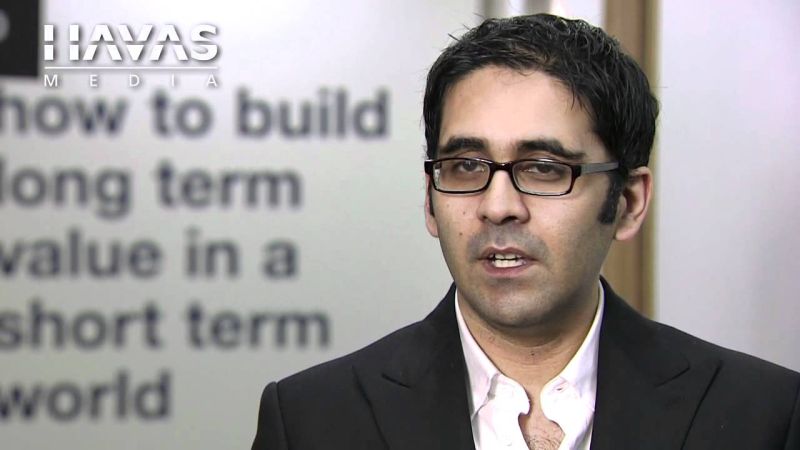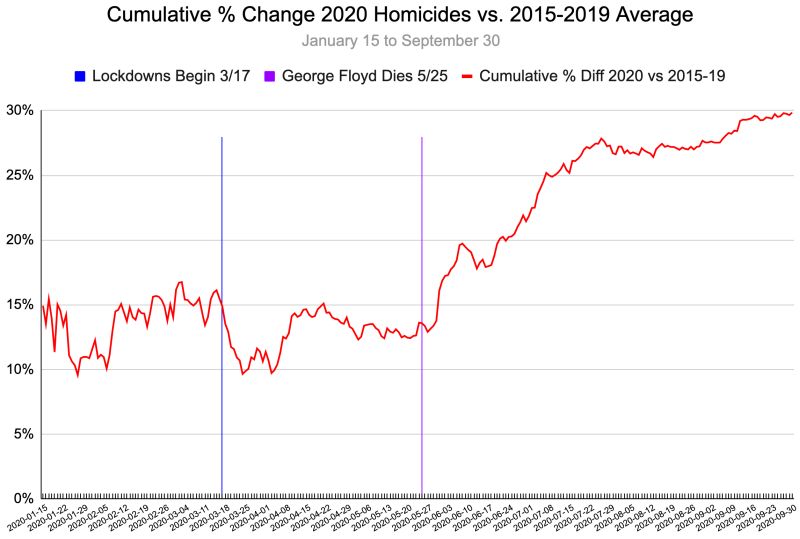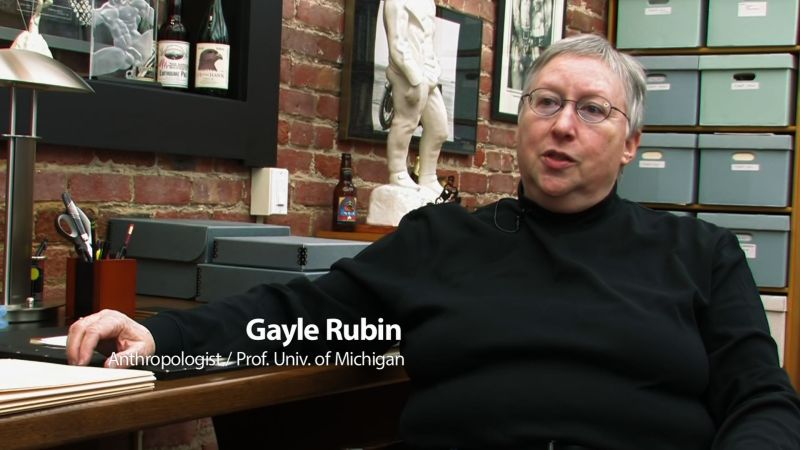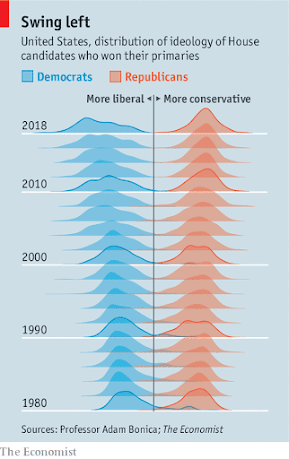 American Extremist: The Psychology of Political Extremism
American Extremist: The Psychology of Political Extremism
Josh Neal
Imperium Press, 2020.
About a year after Charlottesville, I noticed the emergence of a new breed of young alternative thinkers in our circles. I’m more of a reader than a listener and, because these individuals were overwhelmingly engaged in podcasts and YouTube videos, my familiarity with them and their ideas was only developed gradually. At the inevitable risk of omitting someone of importance, I don’t think I’m terribly mistaken in listing them as including, for the most part, the staff of the Euro Bureau of Literaturo podcast—Tyler Hamilton, Josh Neal, Joel Davis, “Fashy Žižek,” and Jefferson Lee—as well as Keith Woods, and a handful of Twitter personalities and other podcasters roughly in the 25-35 age range.[1] Although each brings their own perspective and expertise to a broad range of subjects, these thinkers share a number of characteristics which make a form of common association logical. One of the most obvious is their departure from prior, more reactionary, perceptions of Marxism, Cultural Marxism, and Americanism. As the “Far Right” has evolved, it has inevitably and eventually come to include a younger generation educated in the jaws of the beast, by which I mean a generation educated long after the “long march” through the institutions had taken place.
This younger generation, which, having representatives from Canada, Australia, Central Europe, and Ireland, is less wholly American in staffing if not in following, is more distant from “Red Scare” politics, yet has also been confronted with some of the most radical social changes in a century. The result is that these figures have arguably developed a very nuanced perspective of our contemporary problems and their origins when compared with what might have been offered previously. Other commonalities include the fact these thinkers emerge predominantly from the fields of philosophy and psychology, often with graduate degrees, and combine a renewed and focused criticism of capitalist neoliberalism with a qualified repurposing of some of the arguments of the Frankfurt School, especially the work of Adorno and, to a lesser extent, Marcuse.
One need not agree in toto with the approach or theoretical grounding of these young thinkers to understand that they are performing very important work. One of the consequences of the alienation of our ideas from practical politics in the Anglosphere is the resort to a war of ideas rather than a practical electoral politics based on immediate material interests (e.g., the direct community engagement of the British National Party at its peak). The rise of the social media “movement,” the podcast scene, and the rise of online “personalities,” sometimes disparagingly termed “e-celebs,” has largely followed in the wake of the death of that politics, and it seems to be a received wisdom that cultural metapolitics is necessary to pave the way back to practical engagement.
Be that as it may, the question remains as to which metapolitical path, or battle, is the surest route to success. Here we have a quandary. It’s in the nature of each person to believe that his particular expertise holds the key to unlocking the puzzle of the age. The historian steps forth with a revision of the received narratives of the past in the belief that it will help bring about an awakening. The philosopher sees instead a philosophical revolution as the means to renewal. The geneticist or the anthropologist dissects the dysgenic fall of man and calls for a eugenic program to reverse decline. The psychiatrist diagnoses the pathologies of the masses in the hopes of lifting the veil and ushering in a transformation. The truth, of course, is that all hands are required on deck, and that all keys are required for a Great Unlocking. In this spirit, so long as certain basic principles remain unviolated, I’ve always been relatively open-minded towards novel approaches to the terrible times in which we happen to live. And the revisiting and repurposing of the work of Adorno, Marcuse, Freud, and Žižek is certainly novel.
If I had any problem with these podcasters at all, it was that they didn’t write enough, because putting opinions systematically to paper, where one’s sources can be scrutinized and one’s logical progression of thought more clearly laid bare, certainly makes such opinions more personal, vulnerable, and accountable. Being something of a Luddite, I also harbor a personal antipathy to what I see as the transience of the podcast as opposed to the permanence of the essay or the book (it being much easier in my view to turn to a page for a quote than to click through a succession of time-stamps).
It was a great personal pleasure, then, to see Josh Neal emerge late last year as the first of his emergent cohort to systematically set down a worldview in book form. In fact, in American Extremist, Neal offers one of the most interesting, thoughtful, and challenging (in several respects) works I’ve read in about a decade. This is a sizeable text, coming in at just under 300 densely-packed pages, divided into four “books,” all of which are aimed at reshaping our understanding about how political extremism begins, and what it really is.
Yet, in my reading of this exceptionally written text, it was also much more than that. First, although it is painstakingly objective throughout, this is an intensely personal work and, intentionally or not, it bears the stamp of Josh Neal’s personal journey throughout. This isn’t a bad thing, and it adds considerably to its significance and gravitas in my opinion. Second, American Extremist is one of the most, if not the single most, thorough elucidations of the nature of contemporary society that I’ve ever read. Such was the startling clarity of some of Neal’s dissections that at times I felt as though I wasn’t so much reading the book as being beaten about the head with it. Third, the book is a timely call for self-reflection on the part of all of us who, having spent so much time working against our opponents, should take care not to sacrifice who we are in the process. This is therefore a work of profound political conscience.
Beginnings
The book opens appropriately with an introduction titled “From There to Here,” in which Neal outlines his journey into thought criminality. I think I first saw Josh sometime in 2018, when he recorded an episode of the McSpencer Group with Richard Spencer. He was very well-spoken, authoritative, and seemed a natural in front of the camera. Although some of the media scaremongering around Richard has now dissipated somewhat, especially in the discovery of new bogeymen following the Capital “invasion,” I remember thinking it was very brave for someone who appeared to be a successful young scholar to publicly show his face in a podcast with a figure then regarded as Public Enemy Number 1. In the introduction to American Extremist, we find out just how Neal came to be in this position. A psychology graduate with ambitions to become a licensed clinical psychologist, he spent the period 2015/2016 knee-deep in doctoral applications but also reconsidering his life path and the world around him. Academic psychology was dominated by “academics of a certain persuasion,” and as Neal began to re-evaluate what he understood about the world, “I couldn’t shake the nagging feeling that there would be significant compatibility issues. I wanted to practice my craft, but the cost seemed too high. Cautiously, I began searching for potential off-ramps to liberate me from the highway of stagnation and conformity I saw unfolding before me.”
The Trump campaign, and more specifically the response of Neal’s colleagues to it, accelerated his journey into the kind of wrong-think that places a man in professional jeopardy. But Neal’s journey had begun a little earlier, precipitated by, among other things, the removal of Muammar Gaddafi, the Trayvon Martin affair, the shooting of Michael Brown and subsequent assassination of five Dallas law officers by Micah Xavier Johnson, the migrant crisis in Europe, and the rash of domestic terror attacks in California, Florida, and New York during the second term of the Obama administration. Faced with a challenging political and cultural climate, Neal and a friend entered the world of podcasting. He abandoned most of his earlier media consumption habits, and sought out new perspectives—a journey that would eventually lead him to content produced by the then “Alt-Right.” In relation to his growing distance from his older worldview, his transformation was quite sudden. In Neal’s words, “the depth of my ignorance was dispelled in spectacular fashion. … I was introduced to alternative ways of thinking, texts I never knew existed, and whole ideological movements I was utterly and completely unaware of.” Together with this was another realization:
Intellectual journeys are often more perilous than the kind your average adrenaline junkie might pursue. People won’t disown you for scaling a mountain, but perhaps they will should they catch you reading the wrong book.
Undeterred, Neal pushed ahead with his own broadcast, hoping to make a contribution through his interests in psychology, philosophy, and art. He began an interview series, during which he recorded conversations with figures like Kevin MacDonald, and found it thrilling to work with genuinely heterodox intellectuals as opposed to the kind of fake rebels offered up by the mass media. Neal was soon enjoying a viewership in the tens of thousands, and eventually entered into a broadcasting partnership with Richard Spencer—the McSpencer Group. Although I am unfamiliar with the precise details of what next occurred—and they are only really hinted at in the book—I think Neal was then caught in the crossfire of lingering hostility from some factions of the American movement over Charlottesville. Neal explains that his new broadcast association with Spencer was “not exclusively” the cause of a subsequent clash with “the wrong kinds of people,” but that it was a significant element in it. In any case, it was disgruntled members of the American movement, and not Leftists, journalists, or Antifa, who started the ball rolling in terms of revealing the full details about Neal’s life—a doxxing in other words. What followed was the predictable sequence of media hit-pieces, and Leftist activism designed to ruin Neal’s employment and career prospects and his life in general.
I’ve related this section of the book at length for a number of reasons, the most important being that I think the episode was crucial not only to the production of the book, but to its approach as well. Neal’s entry into our circles was nothing less than a rollercoaster, involving first a sequence of revelations about issues from the Left, followed by a stunning dropping of the veil in relation to some on “our own side.” In Neal’s words,
Just because you think you share beliefs with someone doesn’t mean that you actually do. The alt-right was (and to some degree remains) the place to find some of the most courageous, intelligent, and talented people you’ll ever meet—but it is also a den of thieves and scoundrels. Foolishly, I had gotten into bed with a bunch of snakes and paid the price for it. A tiny but vocal group had gathered all of the information they could find, and hand delivered it to their supposed mortal enemies—antifascist activists and their sympathetic friends working as journalists.
In the aftermath, Newsweek and the New York Post both attempted hit-pieces on Neal, while his Graduate School professors declared that his political affiliations suggested he had succumbed to a “dangerous insanity.” Meanwhile, in the midst of allegations of his own extremism, and confronted with escalations of extreme and often irrational behavior from both the Left and Right, Neal was presented with an important question: What is extremism, and where does it really come from?
In American Extremist, Neal attempts to answer this question while taking clinical aim at extremists of both the Left and Right. The central thesis of the book is that extremism is built into American neoliberalism, and that it is essentially an inescapable top-down phenomenon that draws almost all citizens into its vortex in one fashion or another. While one can take the Left path or the Right, the result in most cases is a suffocating inertia interrupted occasionally only when certain alienated or disturbed individuals spiral off into chaotic and nihilistic violence. While “extremism” has become a talking point, as a societal problem it has become unsolvable thanks to the failure of psychology to even approach the issue objectively. Neal argues that, beginning with Freud, psychology has dedicated itself only to the “erasure of limits, an aggrandizement of the self, and the overthrow of authority and ritual. Eager to depose the Gods of old, deicide became an end in and of itself.” In the postwar period, psychology became a “scientific attack dog” which “legitimized the sociopolitical developments that weakened the family, weakened the community, and weakened the country.” The Frankfurt School and its links to the OSS (an early incarnation of the CIA) prefigured an intensifying relationship between the State and the University, with the result that experiments in depersonalization techniques, and attempts at mind control, paved the way for later co-operation in the development of advanced interrogation techniques following 9/11. Since academic mainstream academic psychology is thoroughly entrenched in the neoliberal system that incentivizes and directs it, a radical redefinition of extremism can only come from outside the paradigm. This is the fundamental goal of American Extremist.
Systemic Alienation
The first “book” of American Extremist is an attempt to explain the ways in which extremism is created and perpetuated by neoliberal elites. Decades of propaganda have steadily eroded mental and cultural links to the past, with devastating consequences. Neal points out that “if a people can be ripped from their inherited narratives, or merely have their narratives re-written in a way that is disempowering, then they necessarily become psychologically vulnerable to the slings and arrows of malevolent storytellers and cognitive colonizers.” What we see today, in average citizens, are “victims of this mythological theft” becoming “alienated from their own identities, thus producing a kind of false consciousness and the development of an othered self-concept.” In attempting to locate the fons et origo of extremism, we would be mistaken to look among individual people alienated from themselves and should instead place the responsibility on “those members of society who possess the power to influence entire civilizations,” and who have greatly benefited from the fact “the subversion of religious, national, and ethnic mythos grants a tremendous capacity for political and social control.”
As an example of myth-robbing subversion, Neal points to Donna Zuckerberg’s Not All Dead White Men (2008), a text dedicated to “de-fanging classic texts (such as those of the Stoics) who, in her view, served as a legitimating force that aided far-right misogyny.” Other subversive figures pointed to by Neal include Hugh William Montefiore, a British Jewish convert to Anglicanism, and later Bishop of Birmingham, whose primary “contribution” to Christianity appears to have been his claim that Jesus Christ was a homosexual. With millions of dedicated and motivated activists chipping away at collective memory like this, a quiet revolution has taken place. Neal stresses that,
The revised slavery mythos sets Black Americans in the role of ‘true’ Americans and Whites in the role of oppressive coattail riders. The narcissism of modern sexual identity allows religious figures to be desacralised and reconfigured as counter-culture heroes for sexual minorities. Novel psychological and sociological paradigms are cast retroactively upon classic texts, thus removing their genius and necessitating their decontextualisation so as to accord with contemporary sensibilities. In all such cases only one group truly benefits: the powerful.
In the widespread absence of the development of secure identity, resentment has become the prevailing feeling of our time and a general atmosphere of falsehood is rampant. Although we’ve heard a lot about “fake news” over the last four years, Neal points out that false collective fictions have long been rampant in American society thanks to the malicious activity of the mass media. Neal uses the cases of Trayvon Martin and Michael Brown to demonstrate the way in which the press is far from “free and independent” in relation to neoliberal hegemony. Media misrepresentation of these cases, and later that of George Floyd, led to nationwide riots, racial strife, and the deaths or protestors and police officers alike. In other words, press action was extremist, and in turn led to extremism. The book then offers a remarkable and damning psychological profile of the average journalist, revealed to be overwhelmingly left-wing with “a high need for power, sensation seeking, and binge drinking.” As the foot soldiers for neoliberal ideology, journalists and other media figures saturate the general population with a malevolent framing of reality that excludes real dissent, with the result that America has witnessed instead a “total convergence between leftism (neoliberalism) and rightism (neoconservatism)—two ideologies birthed by the same mother, differentiated only by aesthetic and temperamental particularities.” Neal continues,
Points of disagreement between the two ideologies rarely scratch the surface of political discourse, instead opting to pedantically bicker over matters both optical and practical, thus limiting the scope of what can possibly be achieved. The theatrical nature of their dispute gives the impression of opposition, whereas on matters of political significance the two invariably march in lockstep.
Journalists keep this theatre in motion because they are “easily controlled people; their hunger for power makes them ideal minions.” The left-journalist is notable for his/her “arrogance and gluttony, narcissism and pedantry,” as well as their habit of being “passive-aggressively confrontational, and possessing a uniquely religious quality of pettiness and vengeance-seeking.” Journalists are often of the “lowest quality and character,” and represent biological types as well as certain perspectives. Neal remarks that, “while their employment does not offer them much in the way of meaningful compensation, they out-earn others when it comes to catharsis, self-righteousness, and visibility.” Equally important, however, is Neal’s assertion that mainstream right-wing journalism is equally sociopathic, and both hysterical and self-serving, with only the object of hystericism differing in each case. Neal explains that “both the American right and left believe they hold a monopoly on truth and moral self-righteousness.” Locked in powerlessness, the media of the Right has descended into “neurotic escapism and counter-narrative creation.”
All media, of course, is essentially monopolized. Neal points to the fact “most of the media any American will ever consume, be it digital, print, or otherwise, is effectively owned by six corporations.” Press centralization means genuine dissent can be dealt with very efficiently either by directly attacking ideas or groups dangerous to the status quo or by maintaining a policy of silence in order to starve these ideas or groups of social oxygen. The media monopoly, in both its mainstream Left and Right arms, is united against genuine opposition, as well as a series of other presuppositions. Neal argues that the idea that progressive neoliberalism and reactionary neoconservatism are wholly distinct and antagonistic is a myth.
Both are system ideologies with a great deal of epistemic agreement, and as such uniformly share the same goals though they may achieve them through different methods. Axiomatically, both accept the primacy of the individual and share the belief that he can be improved or realised through the application of economic techniques. Both tend to view contemporary moral debates in terms of America’s history with slavery and its participation in the Second World War. Both accept a linear, progressive view of history (that is to say, humanity always moves forward, improving along the way). Neither side fundamentally takes issue with America’s imperial practices, especially if the military is used as a force for “spreading democracy.”
The American Ideology
Perhaps most important of all is the fact both Left and Right insist that Americanism itself “is not bound in anything real, but rather is simply a result of the choice to live in America.” Because of this deeply problematic, but ubiquitous, understanding of what it means to be American, we are forced into the realization that “the problem of political extremism is to understand that the problem is America.” Here I was reminded strongly of Sam Dickson’s remarkable NPI 2013 speech on “America: The God That Failed.” When I mentioned this speech to Dickson several years ago, he told me that he had been criticized for it at the time. Now, however, it seems prophetic, at least in the sense that a growing segment of the younger American, and indeed international, movement is rejecting what it perceives as an American imperialism and internationalism that enriches elites and individualistic traitors while destroying the ethnic and cultural fabric of the nation. In fact, Neal, echoing Dickson, insists that “the country can only be regarded as a dismal failure.” One can only add that any nation that reduces its self-concept to merely “a choice to live in ‘X’” is a failure, and this goes for every country in the Anglosphere, and, increasingly, most of the nations of Europe, that have redefined themselves in the image of the ideology of Americanism.
Beginning with a discussion of the myth of democracy, Neal then moves to a discussion of American mental paralysis. Although much ink has been spilled on authoritarianism and anti-authoritarianism, Neal argues that most Americans in fact “struggle to find an actionable equilibrium between the two positions.” Rather than being clearly Fascist-leaning, or anti-Fascist, Americans endlessly fumble in the middle, as demonstrated by the Right’s screeching about fascist overreach under Obama, and the Left’s identical refrain under Trump. Neal asks, “What does this tell us? Are Americans hopelessly confused? Is every political actor a fascist or a fascist-in-democratic clothing? I believe that we can confidently say yes to the former, but no to the latter.” Americans are hopelessly confused because of the way in which democracy obscures the true nature of authority. The result of this confusion is a fear of all authority, as well as a breakdown in authority itself and of its accountability. Neal mentions that,
Parents fail to exercise the rightful authority over their children; teachers do not discipline their students; hedge fund managers, investment firms, and executive boards routinely engage in unethical and illegal conduct but frequently go unpunished; and to the degree that Americans engage in the political process, we find that they support the same policies and the same actors time and time again.
A fundamental feature of American society is that of disunity. “Supposedly unified by our shared American values, our freedoms, and our love of democracy (though not in actuality), the line between friend and enemy grows murkier with each passing year.” Americans are now united only by an increased feeling of unease and uncertainty. Everywhere Americans look they see failures of authority, “thus producing a conceptual collapse whereby failures of authority anywhere become failures of authority everywhere. Without anyone to show us how to act, we struggle to devise constructive courses of action for ourselves. Absent a rightful authority, agency and ethical conduct collapses.” Neal thus implies that the remedy to our current situation is not less authority, but an increase in ‘rightful’ authority. He contrasts this with the inertia of conservatism, stressing that authority is “a wilful and vital stance which seeks assertion, dominance, security—yes—but more importantly a securing of desire, or some thing, be it an object or a goal.” Locked in a holding pattern in which he/she perpetually loses, the conservative is little more than a right-liberal.
Another myth attacked by Neal is that of the individual. Neal insists that extreme individualism is indistinguishable from sociopathy. A key problem of our time is that extreme individualism is now systemic, encouraging endless “narcissistic line-pushing,” and endlessly shaping individuals in this image:
America’s culture of transaction and domination, of immediacy and short-sightedness, of ruthless pragmatism, could produce little else in its population. The speed with which recently migrated peoples conform to this system surely indicates the verity of this fact.
A society filled with individualistic sociopaths will inevitably reproduce both extremists and novel forms of extremism. Combined with alienation from one’s identity, what emerges is a kind of oikophobia, a fear of one’s own house, or the commonplace items one might find inside it, now transposed to the cultural sphere, where the oikophobic individualistic sociopath develops a disdain for all that is familiar in his homeland and home life. From this emerges a fashionable disdain for rural or “hometown” America, for one’s ethnic group, and even for oneself. Such, argues Neal, is the one of the major problems of our time.
What is Extremism? Who is an Extremist?
The first hurdle faced when dealing with extremism is the issue of definition. Our conception of extremism is, for the most part, set in stone by organizations like the ADL and the SPLC who use it as shorthand for White, rightwing dissent from the multicultural neoliberal status quo. This tunnel vision isn’t just an issue of partisanship, but of wholly malicious intent, as evidenced in the documentary Alt-Right: Age of Rage when a chart illustrating White demographic decline was captured ‘in shot’ during an interview with the SPLC’s Mark Potok. Of the SPLC and the ADL Neal remarks:
We may say it is a metaphysical principle of certainty that whenever an individual or group undertakes a world-transformative mission of moral excellence that their true intention probably has more to do with the opposite of goodness and nobility. This is particularly true when that mission is aided by State and Capital.[2]
The mission of the ADL and the SPLC has been boosted in recent years by increasing cooperation from the press, with Neal noting that “the language of the top press outlets radically shifted in favour of extreme intersectional neoliberal ideology.” Thus, while the mantra is that White nationalist extremism is on the rise, “one can only conclude that, institutionally, the ideology of the intersectional left rose to prominence, not White supremacy. Ideological White supremacists, nationalists, immigration skeptics, racists, and patriots (who are all regarded as indistinguishable from one another and thus equally evil) hold no sway in the media, the government, and are hard pressed to locally organize.” Neal argues that the real nature of extremism takes the form of a “high and low versus the middle” pincer strategy, in which elites cooperate with the lowest (rank and file anarchists, antifa, etc.) in order to mobilize against the middle (working classes and members of the recently dubbed precariat). The result is that the pincer “squeezes the center out of political existence,” thus breeding extremism systemically. But the only definition of extremism elites are happy with is one that condemns “critics of global finance, open borders, multiculturalism, radical individuality (feminism, identity politics, etc.), scientism, institutionalised arts and media, and the sexual revolution.” Whether individuals protest against these things with a laptop, or with a semi-automatic rifle, is ultimately of no consequence to elites, who insist that “lawful and peaceable radicals are no different from the violent school shooter, the rioter, the unhinged lunatic—they are extremists one and all.”
Neal, on the other hand, asks why definitions of societal harm, and extremism, are not much broader. He insists that
The university professor who betrays his role as shepherd of his academic flock, the journalist who uses his platform to spread maladaptive ideas or destroy the lives of those he views as contemptible, the media personality who engages in dishonest and destructive speculation and reckless cheerleading, the tech guru who indulges in post-human fantasies, the capitalist who sacrifices his workers’ livelihood for greater earnings, the physician who trades his role as healer for that of political activist—they are all, no more and no less, every bit the extremist that the school shooter and the online anti-fascist/racist are. … Pathological and antisocial extremism from on high breathes life into the lungs of those down below. Their relationship is symbiotic.
The ubiquity of the “high-low” definition of extremism is, however, severely limiting to the average individual, who invariably fears social ostracism. The self-policing of thoughts is therefore rampant. Neal remarks that “average people do not fear being wrong, or philosophically and intellectually inconsistent. The average person fears social censure; he fears a disruption of employment. He fears, deeply fears, an inability to find romance and friendship.”
How A Society Becomes Extreme
Again, Neal’s fundamental premise is that extremism is “a top-down phenomenon, originating among the powerful and then floating downstream through the various institutions of power and influence.” Like all revolutions, the advent of neoliberal extremism has not occurred “without the patronage of the upper classes.” Neal borrows from the work of Polish psychiatrist Andrzej Łobaczewski (1921–2008) to argue that our elites are staffed predominantly by characteropaths, individuals who, through biological condition or genetic predisposition, are given to a psychological disposition to evil. Beneath the elites are pathocrats—maladapts and political actors given to the psychology of evil who are also skilled in the infiltration of institutions. Since characteropaths cannot thrive under normal conditions, they “must destroy what is good and healthy in order to live.” The foot soldiers of both groups are schizoids; a lumpen population of the hypersensitive, the distrustful, and the eccentric. Also of assistance in this scheme are skirtoids (the uncritical, the egotistical, and those drawn to the primitive), and “jackals”—violent mercenaries. Neal illustrates these categories with some interesting examples, most notably that of legal scholar Cass Sunstein, who is presented as a quintessential pathocrat skilled in subversion and the manipulation of language. Neal points to the manner in which Sunstein, a “spellbinder,” “has a long-standing preoccupation with the control of information flow and human behavior. … [He] seeks to nudge people away from their deeply evolved instincts toward attitudes that favor the governing classes.”
Spellbinders like Sunstein, who “cannot function in a healthy society, and feel wronged by it,” help suspend cognition in the masses through changes in the meaning of terms like ‘racism’, ‘anti-Semitism’, etc. Since many reactions to the decline of society and civilization (disgust, anger, etc.) are based in evolved and natural responses to negative stimuli, changes in language and the interruption of cognition results in the fact that “a whole range of emotional responses (disgust, confusion, ambivalence, reticence, self-preservation etc.) are no longer legitimated for anyone outside of the spellbinding class.” In fact, through speech laws and other legislation this narrowing is enshrined in law. The project of delegitimizing identity is thus so total that it acts as a catalyst to extremism among those deprived of natural emotional responses.
In some pathological responses, the result is, of course, an inversion of the suffocated emotions, and Neal remarks that “it is possible to critique oneself out of existence”—something that is clearly ongoing throughout the West. There is a very real incentive, therefore, for hostile elites and spellbinders to continue with the status quo. Neal points out that
once the central pillars of the individuation process are toppled, we are all but helpless to make up the difference, particularly when they are replaced with toxic simulacra—psychological facsimiles—that are transient and wholly inferior to the real thing. We become ripe for exploitation.
White left-liberals are described by Neal as some of the most prominent victims of elite extremism, since, through concept creep, they have come to regard most of their own heritage as either non-existent or uniquely evil. As explained in American Extremist, these individuals, for a range of reasons, are capable of great “sensitivity towards injustice directed towards others but not the self.” Many, of course, also become ambitious for advancement within the status quo, and are only all too aware of the price for admission—one they are in many cases quite willing to pay:
Without the ability to creatively construct his identity, to conceptualise his experience in terms that he uniquely understands for himself, contextualised by his community, man becomes something easily molded and controlled. Modern American identities are passively accepted by the transformed consumer classes; developed by academic spellbinders and reified by figures of cultural influence, so chosen not because they actually represent anything of significance or because they are trusted members of some community, but rather precisely because they are willing to compromise themselves—to purge their consciousness and accept another in its place—is what earns them the role of high priest or priestess of the American empire.
In the second book of American Extremist, Neal profiles the psychology of extremists of both the left and right while maintaining the basic principle that “the extremist is a cultural creation through and through.” The section begins with a thorough denunciation of centrists and fence-sitters who view themselves as somehow apart from the poles of the system. For Neal, the static centrist is characterized by a numbing inertia that renders one particularly vulnerable to the nudges of the pathocrats. In short, the centrist believes he’s standing still while the changing of definitions all around him means he is in fact a pawn constantly moving in a direction dictated by the spellbinders. “Time and again, he cedes territory because of his habit of narcissistic ignorance and apathy.” From here, Neal moves to a discussion of the antisocial extremist of the left (AEL) and of the right (AER). Neal borrows somewhat heavily from psychoanalysis in this section and, depending on their opinion and knowledge of that subject, readers may or may not enjoy this style of profiling, heavy as it is in references to the ego, the id, and, in one case, even to the retention of feces. Freud is employed with qualifications, but again, I think some readers will find this approach difficult. For my own part, the use of this approach caused some hesitancy, but wasn’t so overbearing that I became dismissive. I was also aware of the fact that I’m simply not well-read enough in psychoanalysis to be able to offer a meaningful critique of this kind of discourse. My really rather limited reading is skewed overwhelming to the writings of Jung, and I haven’t read more than a couple of essays by Freud. I nevertheless found the section very interesting, with much that I couldn’t help but agree with. Neal’s description of the left extremist as psychologically underdeveloped and addicted to politics as part of a deranged pursuit of pathological pleasure certainly has a ring of truth.
The Internet
Book III, “The Digital Demiurge,” was one of my favorite sections of the volume, and offers some piercing insight into the way in which the internet, and social media in particular, has accelerated extremism. Being an instinctive Luddite, I’ve long regarded social media as an unmitigated disaster, and have several times in the past advised people to remove themselves altogether from the most data-intensive platforms. The internet has swamped us with information, with the result that we know more but act less. At the same time, the dynamic of Internet news media is such that sensationalism is a built-in and inescapable feature. For Neal, “the techno-informational age has made hermits of us all.” We buy online, we date online, and more and more of our social and political life is taking place exclusively online. The result is a proliferation of online lives that allow, to an increasing extent, ordinary people (especially those opposed to the system) to be targeted as if they were responsible for all the ills of the world. One need only look at the glee that accompanied attempts to dox attendees at the torch-lit rally the night before Unite the Right in Charlottesville. As Neal puts it, “the will to transgress is being directed at people with no influence whatsoever. … More and more, the average person is invited to participate in this new social ritual—to vilify, degrade, and shame the apostate of neoliberalism.” Neal continues:
The prevailing psychologies of our time (hopelessness and loss, moral self-righteousness, narcissism, and rage) combined with free and easy access to total strangers creates the perfect storm of opportunity for irrational (and consequence-free) retaliation. The retaliatory object is symbolic, for it is almost never the case that the transgressor was personally slighted by them. Rather they are the image of the oppressor.
Social media in particular has resulted only in the formation of herd mentalities, and has “permitted the control of global crowd consciousness in a way that has never before been achieved in human history.” Neal adds:
Corporate control of these social media platforms simultaneously allows for the cordoning off of wrong think, which keeps the larger crowd docile and removed, while also permitting wrong thinkers and their ideologies to fester in isolation, thus more susceptible to self-cannibalisation and irrelevance.
Neal spends a fascinating few pages on the nature of censorship that I found extremely enlightening, not least his characterization of it as an “evolving technique of removal,” and as a survival technique developed and implemented in a sick society by “the disease-makers.”
Solving the Problem
The final book of American Extremist is devoted to discussions around solving the problem of extremism. The section opens with a very good critique of false, but heavily publicized, “attempts” to address the issue, with special emphasis on Robin DiAngelo’s White Fragility. Having reviewed White Fragility myself, I agree with much that Neal has to say on the subject, especially his discussion of DiAngelo’s “malicious” use of language to describe Whites and the “curiosity of an ethnically Italian-Jewish woman championing the cause of Blackness.”[3] Neal situates DiAngelo’s work, and her style of Capital-sponsored “Whiteness education” as falling into the same category as “corporate gym memberships, sports leagues, psychological services, and hot yoga classes,” since “anti-racism training promises to make the workplace a better environment for everyone. In the mind of the neoliberal, raising political consciousness has the same holistic value as any diet or fitness regimen.” DiAngelo claims to be fighting against the overwhelming strength of Whiteness, but, Neal asks, if this is the case then we must ask how she got her book published, and how she can command speaking fees in the tens of thousands of dollars. Her message is promoted in every company, school, and university. The answer, remarks Neal, is that extremism, or elite-created perceptions of it, is profitable. There will therefore be no genuine attempts to resolve it from within the system.
Neal then turns to his own proposals for a genuine transformation of society, and these involve attacking extremism at its root. He first suggests an attack on the pathocratic vision of the future. He then stresses that Man must be provided something meaningful from within to steer him from despair. The entire moral framework of the elites must be rejected. A more philosophical mode of thinking should be introduced to the minds of troubled individuals. There should be a concerted effort to promote the building of faith, family, love, and honor. Finally, Neal calls for free and uncomplicated speech.
Final Remarks
Josh Neal’s American Extremist is a vast, wide-ranging, nuanced, and incredibly thoughtful treatise on the decline of American society and the rise of political extremism. The book is a product of a tremendous amount of study and effort, and it will require a similar level of study and effort from the reader if the fullest extent of its wisdom is to be extracted. It’s a book to be read and re-read, and I believe that, since we unfortunately may be shackled to neoliberalism and its ideological poisons for some time, it will continue to be of the utmost relevance. Its author is to be congratulated and thanked in equal measure.
[1] Eric Striker and the TRS team share some of the thinking of this group, but have a longer history of movement prominence, and differ enough in approach, to be considered distinct from this new grouping.
[2] One is also reminded of that famous line from Bukowski that “the best at hate are those who preach love, and the best at war finally are those who preach peace.”
[3] I myself was unable to confirm that DiAngelo had a Jewish ethnic background.

 Acclaimed Black thinker
Acclaimed Black thinker  Pakistani White-hater Umhair Haque
Pakistani White-hater Umhair Haque The
The 

 Fake scholar Judith Butler
Fake scholar Judith Butler Porn-positive pedo-pushing Professor Gayle Rubin
Porn-positive pedo-pushing Professor Gayle Rubin Fake woman
Fake woman 






 American Extremist: The Psychology of Political Extremism
American Extremist: The Psychology of Political Extremism


